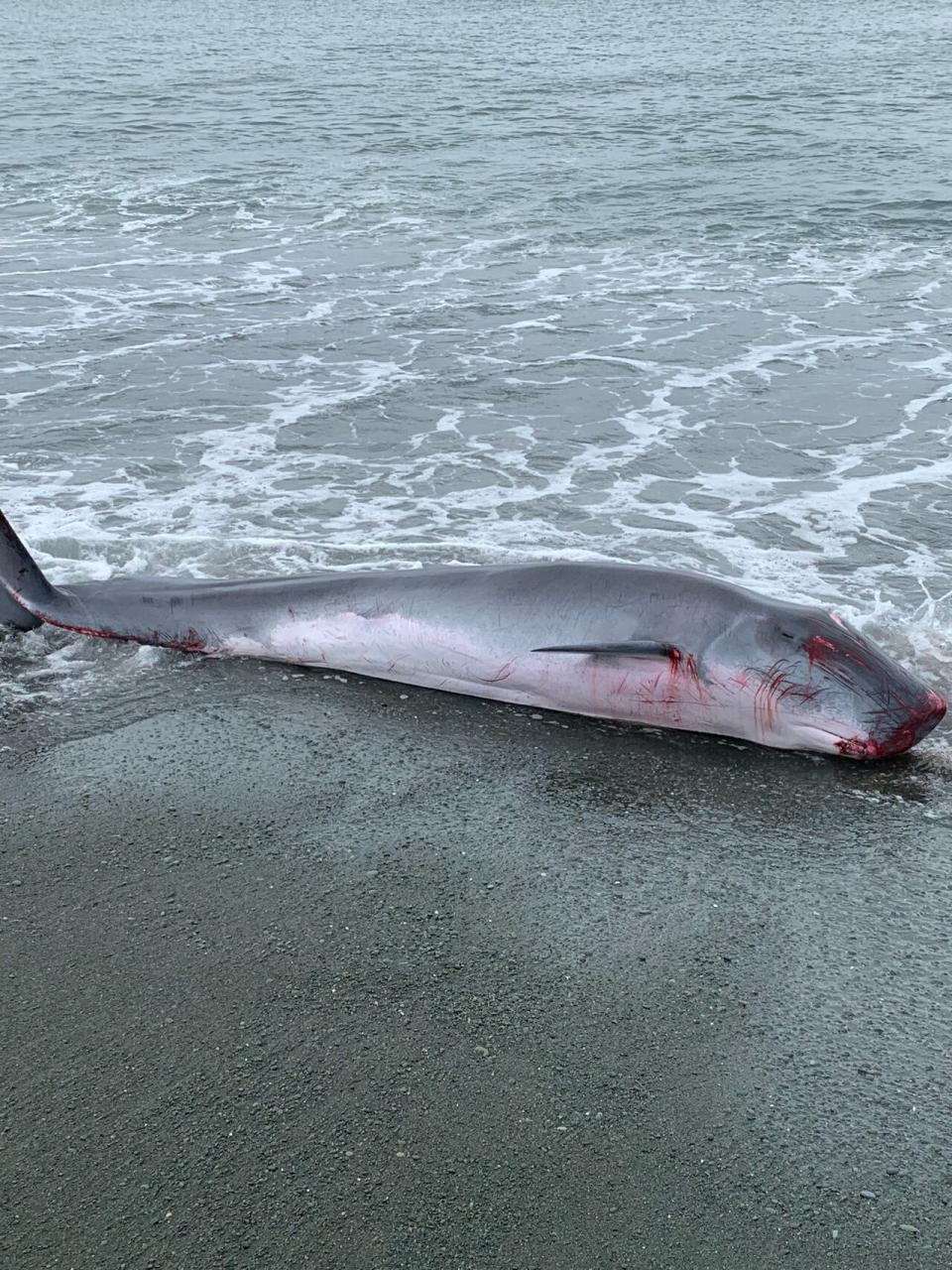
This pygmy sperm whale washed ashore on the Avalon Peninsula, says Julie Huntington, offering scientists a glimpse into the life of the rarely seen creature. (Submitted by Julie Huntington/Lukas Ward)
A dead pygmy sperm whale washed up on Newfoundland’s Avalon Peninsula last week, and one conservationist says the creature was still able to mount a type of inky defence.
According to the U.S. National Oceanic and Atmospheric Administration, the species is usually located in temperate and tropical seas and has a square-shaped head, along with only a bottom row of sharp, curved teeth.
Julie Huntington of the province’s Whale Release and Strandings group said sighting a pygmy sperm whale in Newfoundland and Labrador is extremely rare.
“It’s the third one that we’ve worked on in the last 40 years,” she told CBC News.
Huntington and colleagues Cateline Landry and Maria Peddle performed a necropsy on the creature on the Portugal Cove South beach where washed ashore to collect information about how it died.
Huntington said there was a lot of thick, tar-like ink in its lower intestine, which she said is the whale’s natural defensive mechanism.
“It will exude that — will push that out — and that creates a cloud in the water,” she said. “If a shark is following it or something else that would prey on it, the animal can get away.”
She also got up close with that feature while cutting into the whale.
“We opened that sac up … and it got all over us,” said Huntington.
Huntington said a thick black substance covered them and they had to clean themselves off in the ocean.
“Half an hour later we looked at the waves and that was still in the water,” she said.
Collecting samples
When the whale washed ashore near the Mistaken Point Ecological Reserve, said Huntington, her organization was contacted by interpreter Lukas Ward, who described the creature and sent a photo.
At the beach, she said, they weighed and measured the pygmy sperm whale, as well as took samples, including teeth, that were given to Fisheries and Oceans Canada scientists.
“With the teeth, they can find out the age of the animal and a little bit more about the health of the animal over a time period,” she said.
At the moment she said they don’t know a lot about the whale and how it died.
“It had a lot of damage on its head that could have happened on its way in because there were rocks just offshore,” said Huntington.
“These are not animals that want to show themselves. And when they do go ashore, they’re doing it for a reason.”
When they carried out the necropsy, she said, she noticed its jaw was broken, adding maybe that was the reason it wanted to go ashore.
Its stomach was empty, she said, which isn’t necessarily unusual, as pygmy sperm whales regurgitate food when they come ashore. But she said there wasn’t anything in the small intestines.
Huntington also believes someone came across the pygmy sperm whale on the beach and tried to get it back to the ocean, something she discourages people from attempting. She said while people believe they are doing a good deed, the mammal isn’t necessarily stranded.
“It’s not really recommended that people try to put it back in the water,” she said, adding people could injure the creature by dragging it along the ground.
After the necropsy was done, she said, the whale’s corpse was left on the beach, where it will wash out to the ocean and become food for other animals.
“There’s a huge life cycle of [feeding] bottom creatures on whales, and it’s a big part of the life cycle of the ocean,” she said.
Download our free CBC News app to sign up for push alerts for CBC Newfoundland and Labrador. Click here to visit our landing pag

